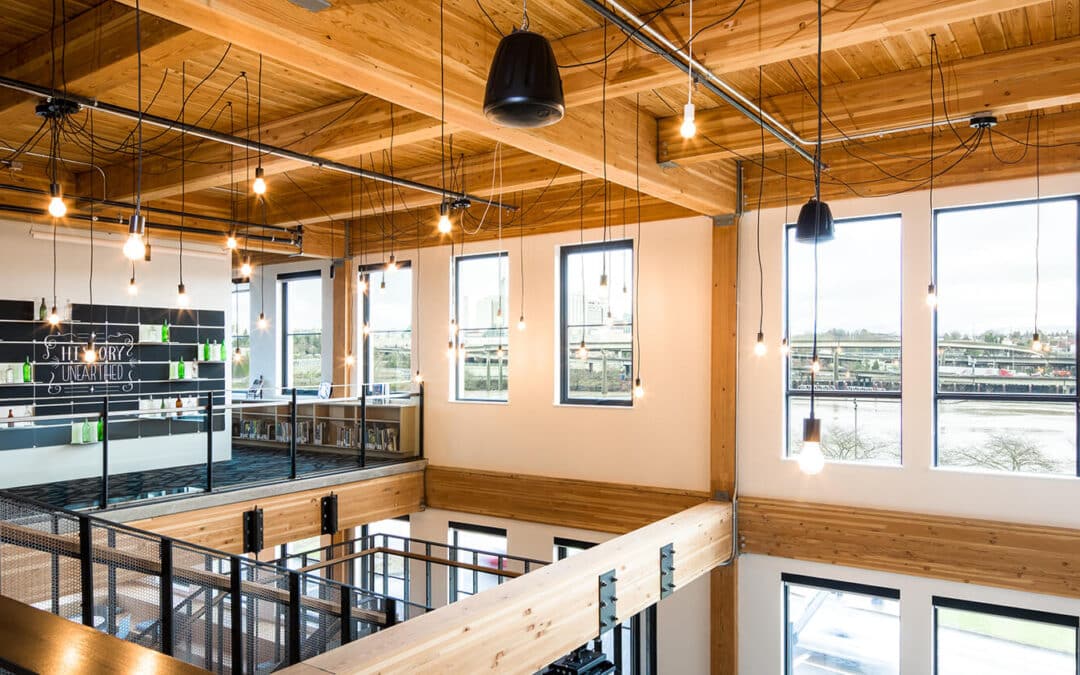A Timeless Trend: Wood | Whether in retail, restaurants and hospitality, or any kind of commercial space, wood accents will create the inviting atmosphere you want.
Even if they’re working in a space in the middle of an urban jungle and miles away from the nearest hiking trail, commercial designers are still harnessing the powerful benefits of nature in stores, restaurants, and office spaces. In fact, it’s one of the most influential design trends in the last few years – the biophilic design movement taps into our inherent inclination as human beings to be close to nature, literally bringing the outdoors inside through natural elements like plant walls, water features, an abundance of natural light, and natural wood accents.
Not only are natural design features like these pleasing to the eye, biophilic design is also said to lead to reduced stress, lower blood pressure, increased productivity and improved overall wellbeing. There are other benefits to businesses too: in offices, biophilic design can improve employee attendance and satisfaction, and it can also result in higher sales in hospitality or retail spaces.
When it comes to wood, a clear choice is to incorporate it into your furniture design, it’s one of the most adaptable, durable and cost-efficient materials you can find. But there are many more ways to involve wood as a focal point in your commercial space to invoke a warm, comforting atmosphere and reap the benefits of biophilic design. The limits are your own creativity – but here are some ideas to get you started!
Ways to Incorporate Wood Into Your Commercial Design
- Exposed wood trusses or heavy timber columns: achieve a rustic yet grand look by revealing these original architectural gems (or add your own if you need to).
- Wood paneling: continue your wood flooring up onto your walls for a classic but modern look.
- Accent walls: for instance, wood can be cut into a mosaic or discs of different depths (just a few ideas to start) and assembled on a focal wall to create visual interest and even soundproofing benefits.
- External façade: adding wood accents to a building’s exterior brings the outside inside and then back outside again, improving curb appeal and potentially adding playful shadows to your space as daylight progresses.
- Room dividers: you can improve an open space’s customer experience by dividing it up into smaller “rooms” user wooden slats or structures, which also creates more display areas and visual interest.
- Decorative feature: functionality be damned, sometimes wood is just enough on its own to warrant your attentions – and because it’s so flexible and adaptable to any colour schemes, wood sculpture is relatively accessible for custom art pieces.
Once a designer has decided on wood as a material, they’ll have to then choose between wood type and grain, fabrication material, cost and colour. But that’s part of the benefit of wood as a design material – it’ll outlast any trend and appeal to any audience.

